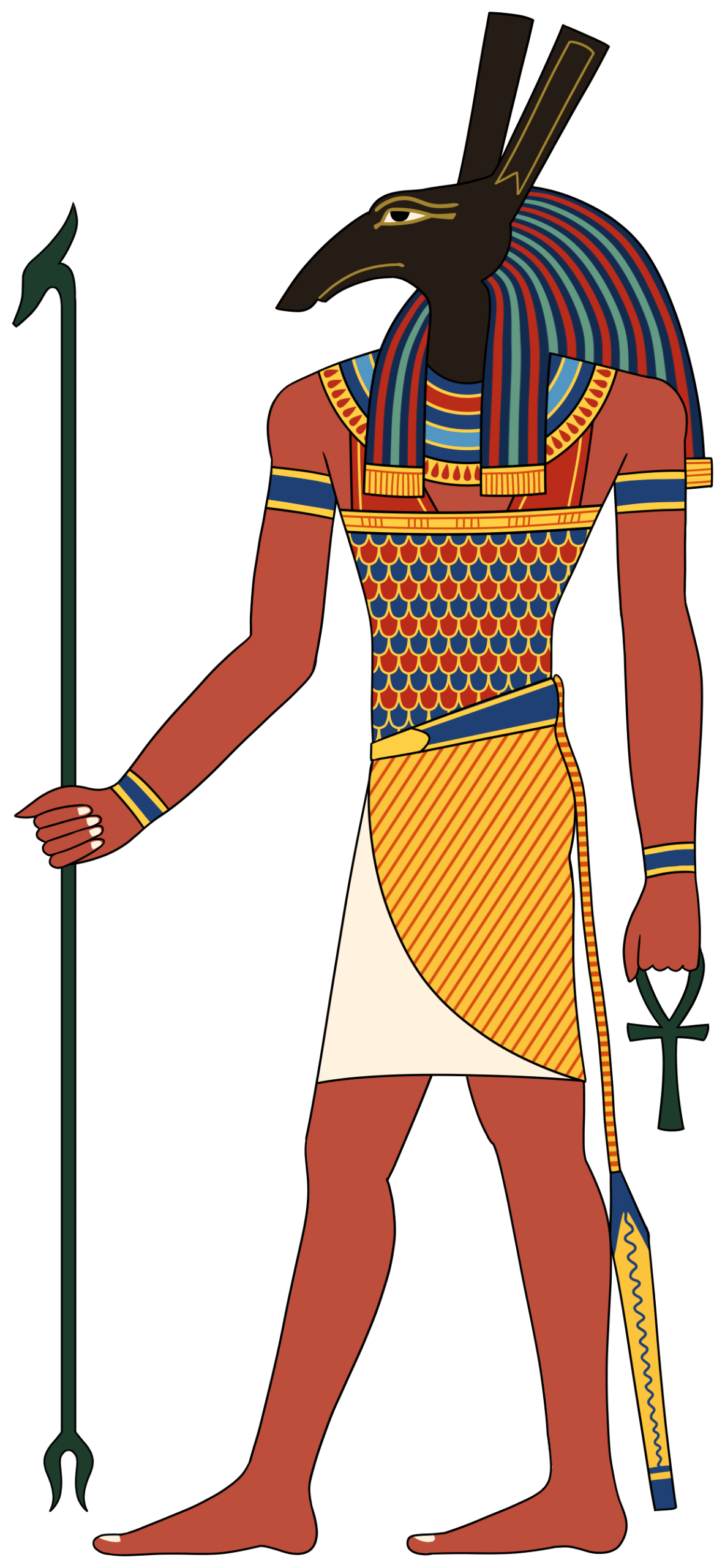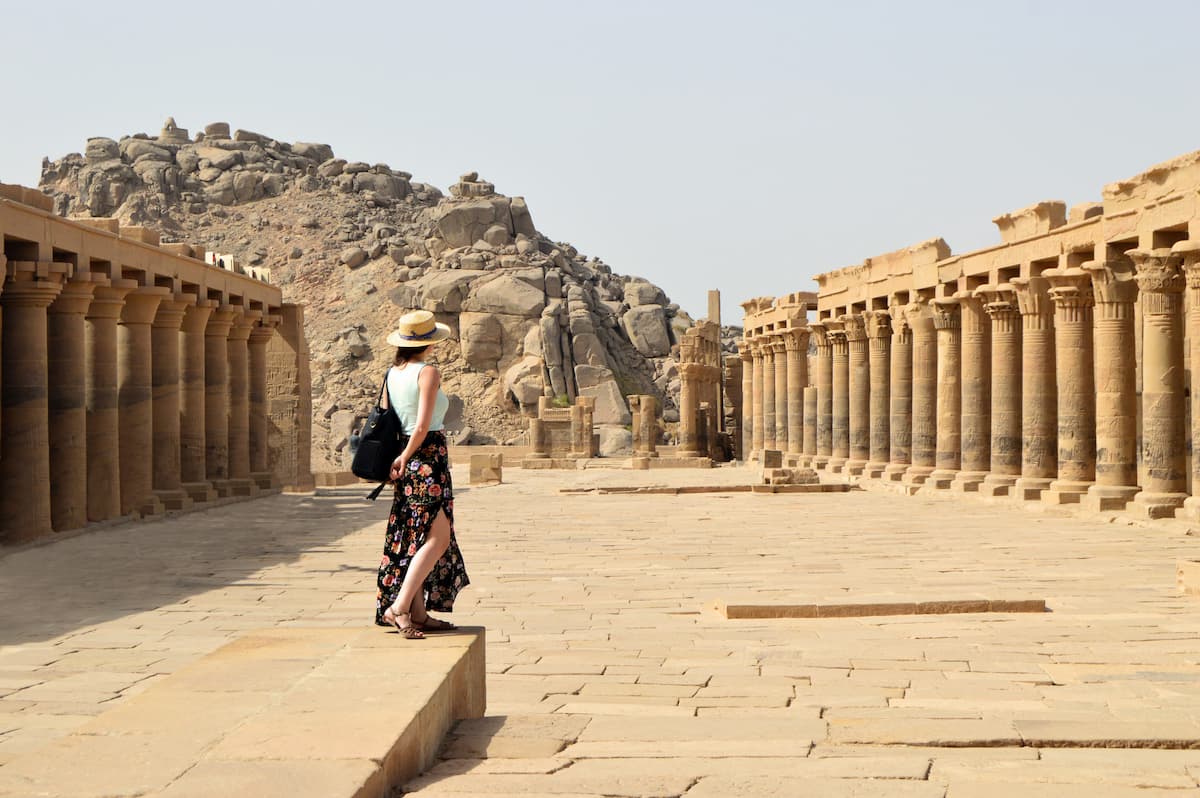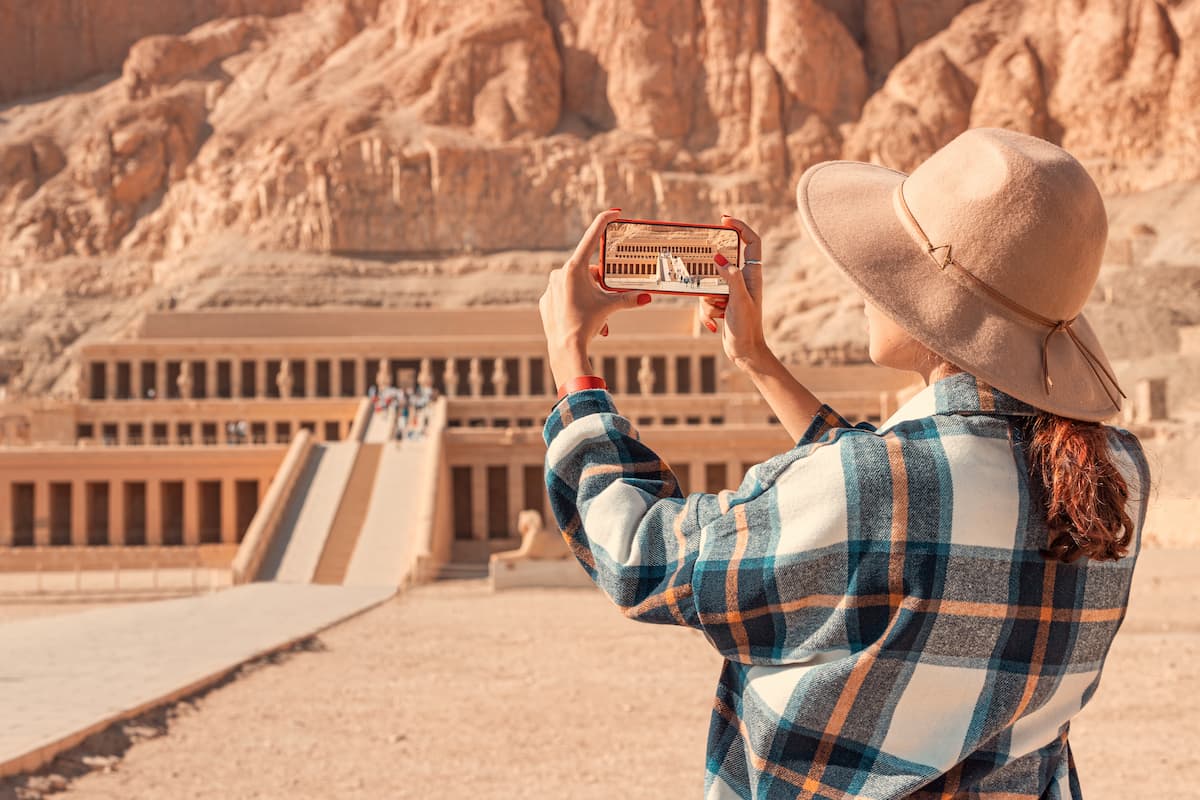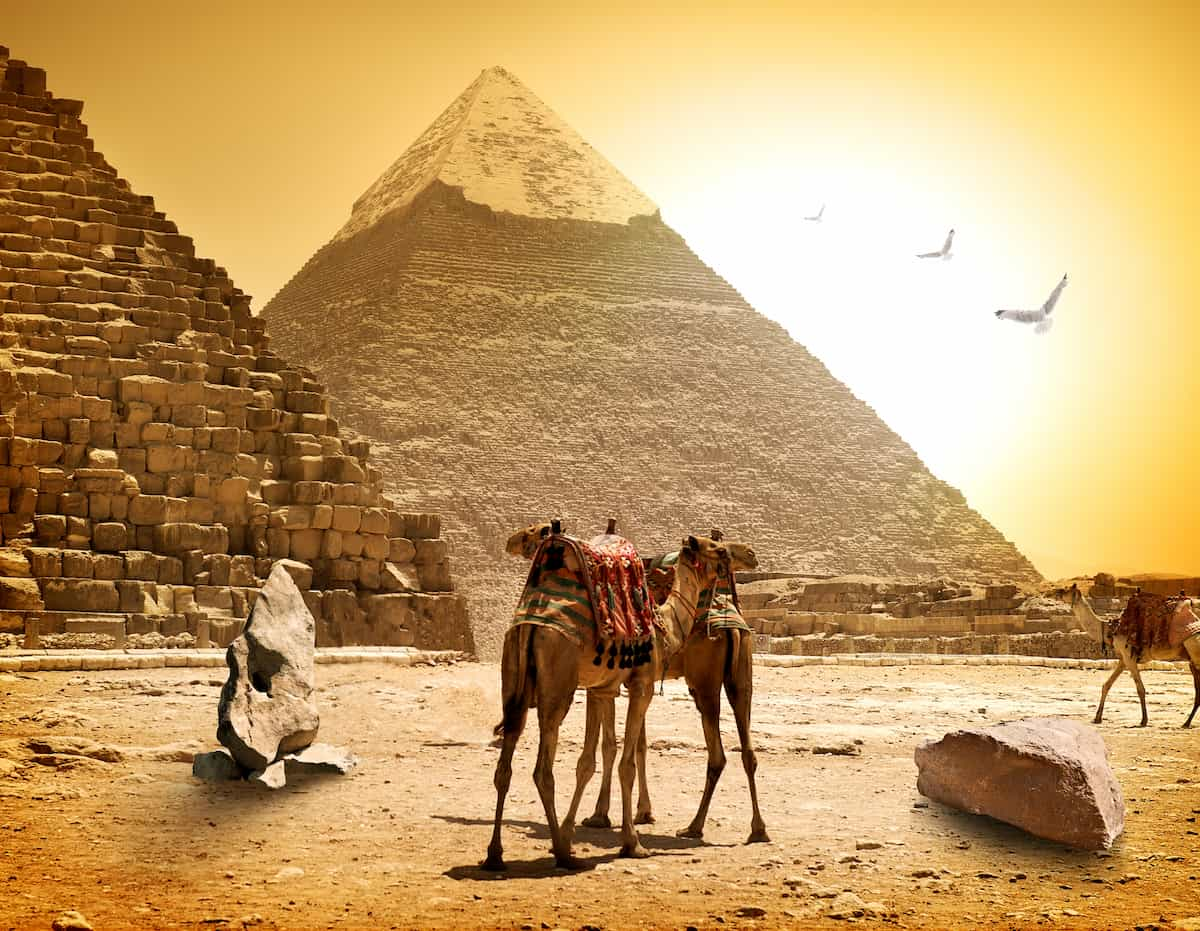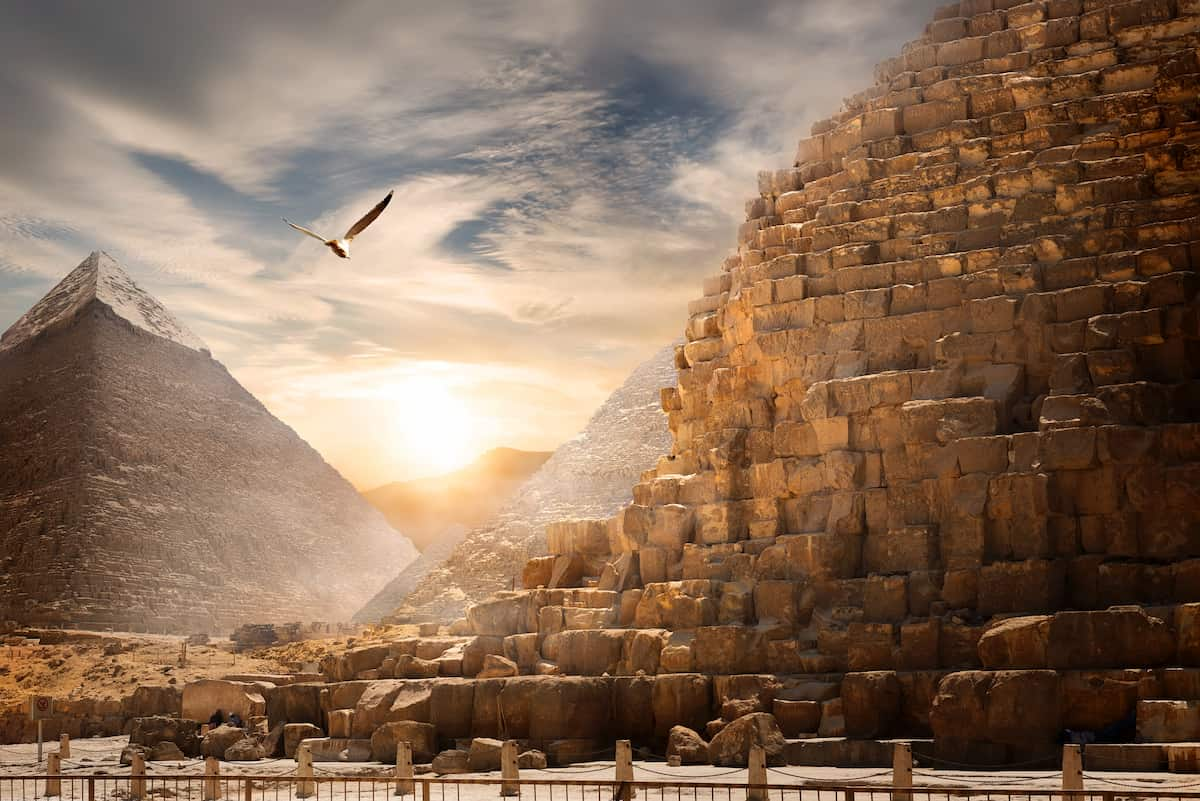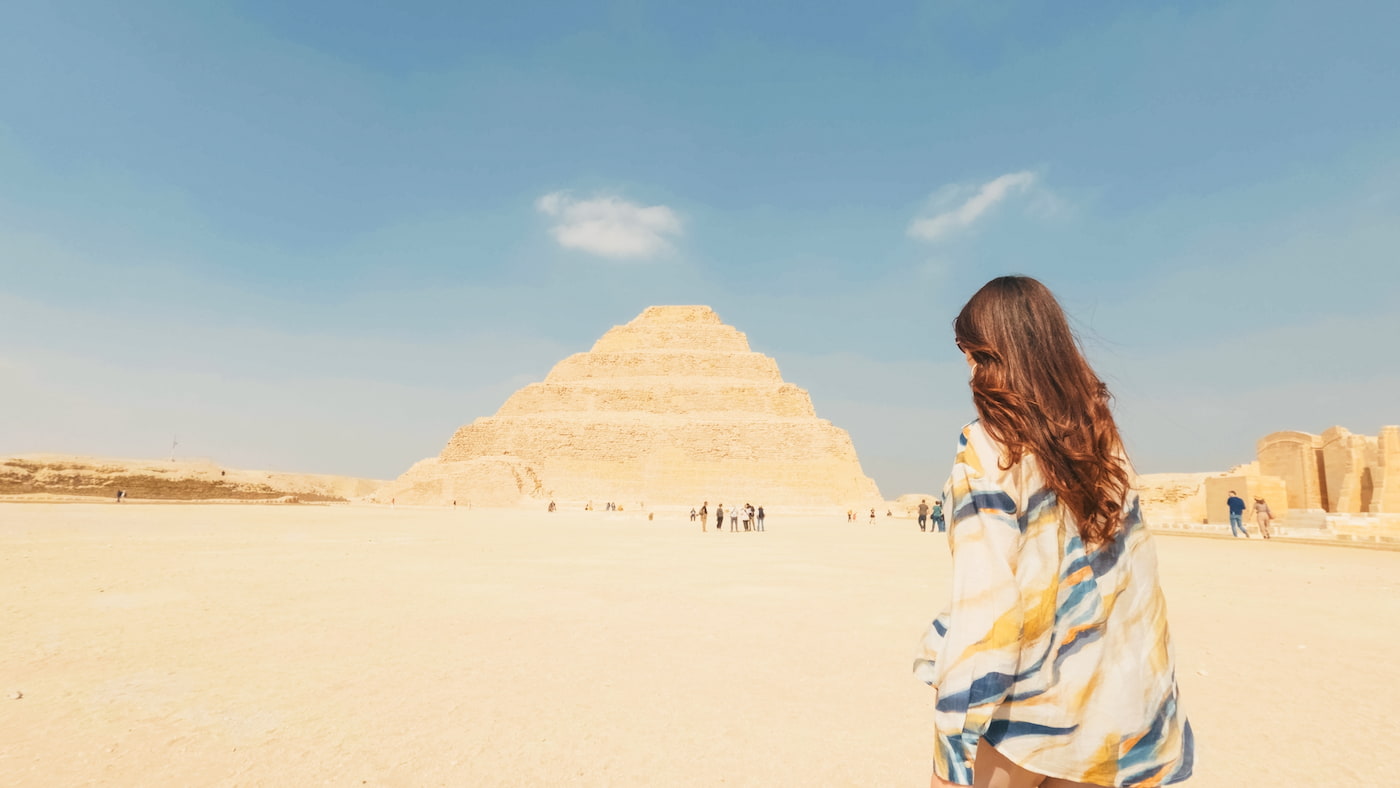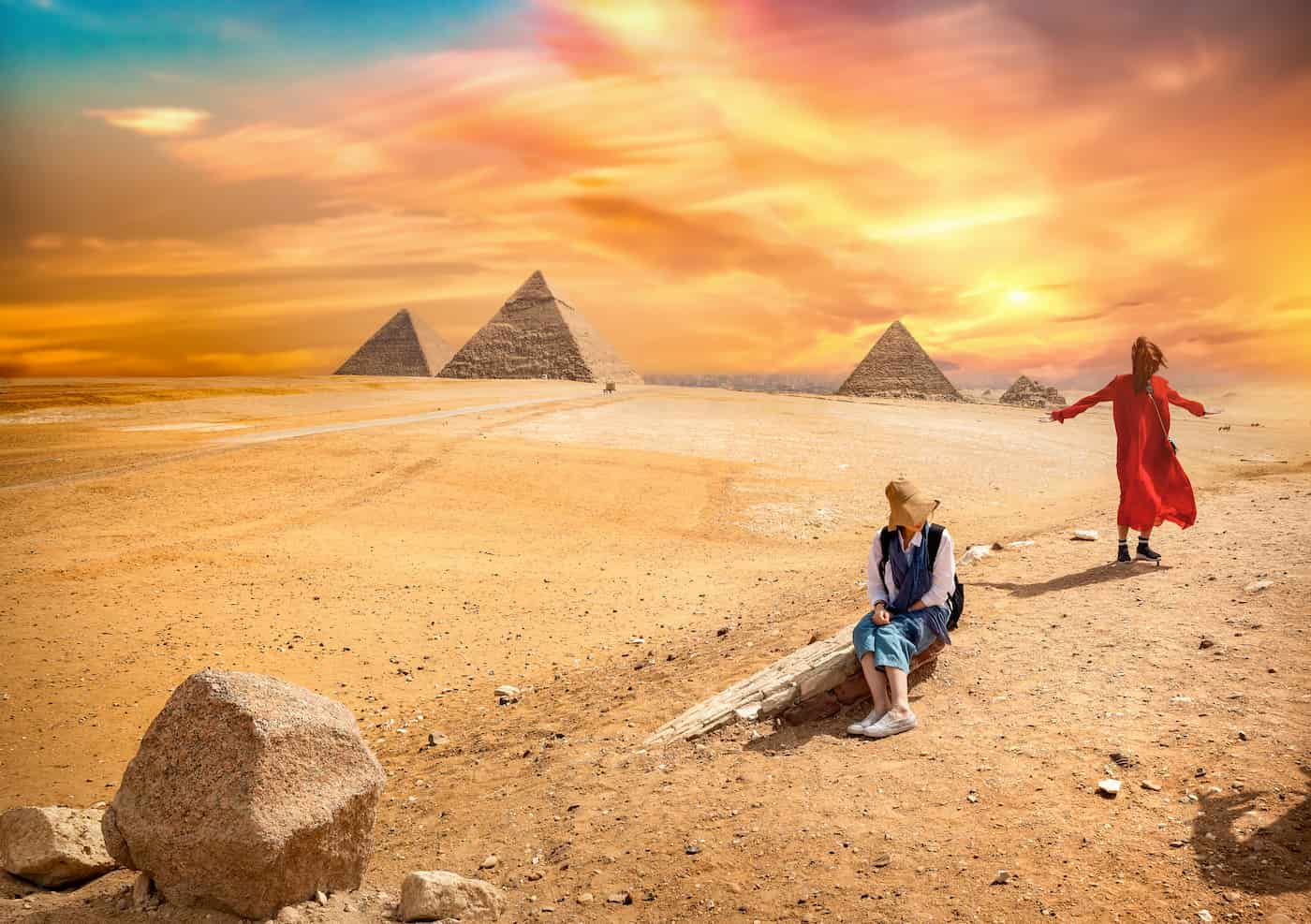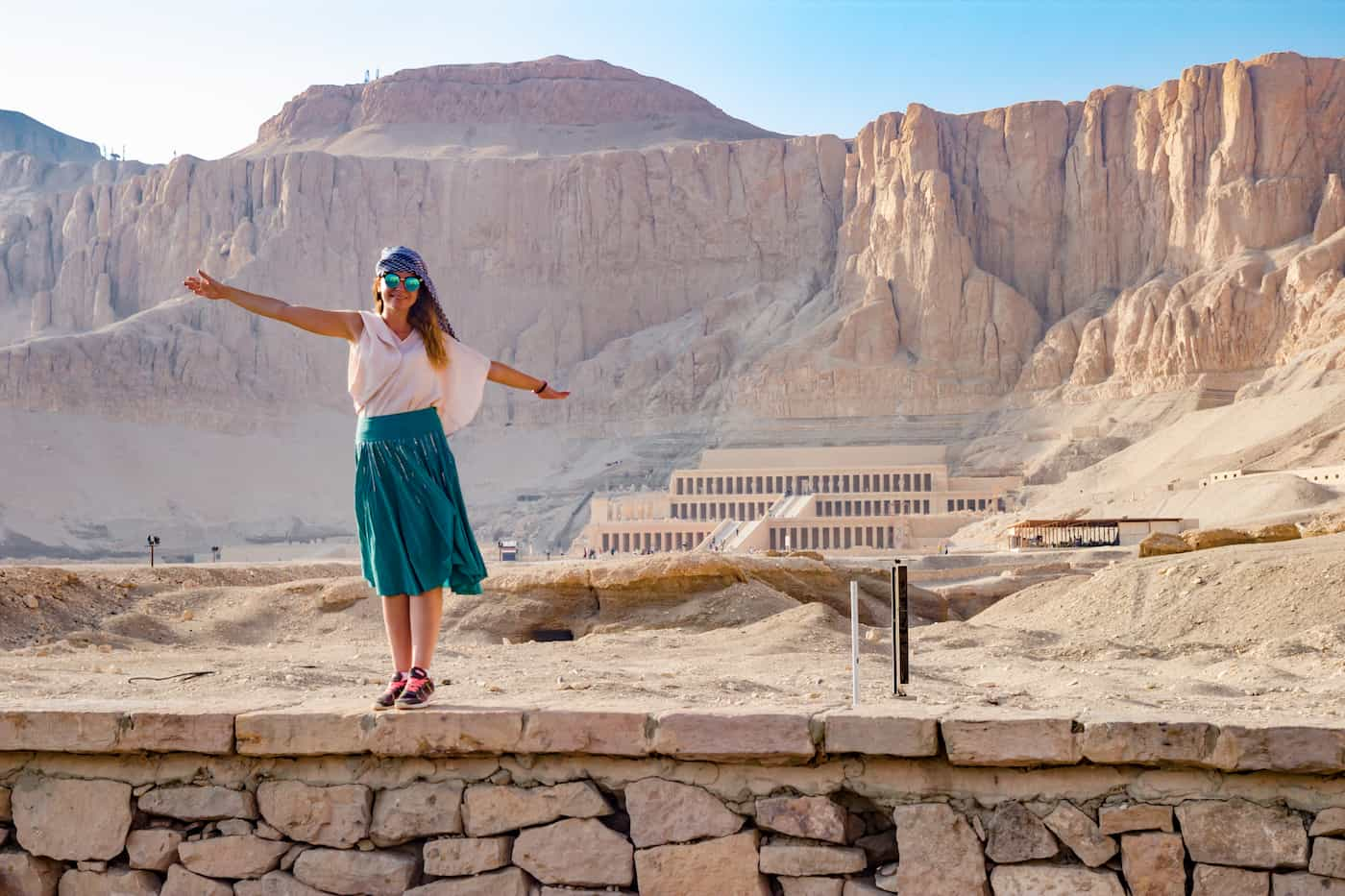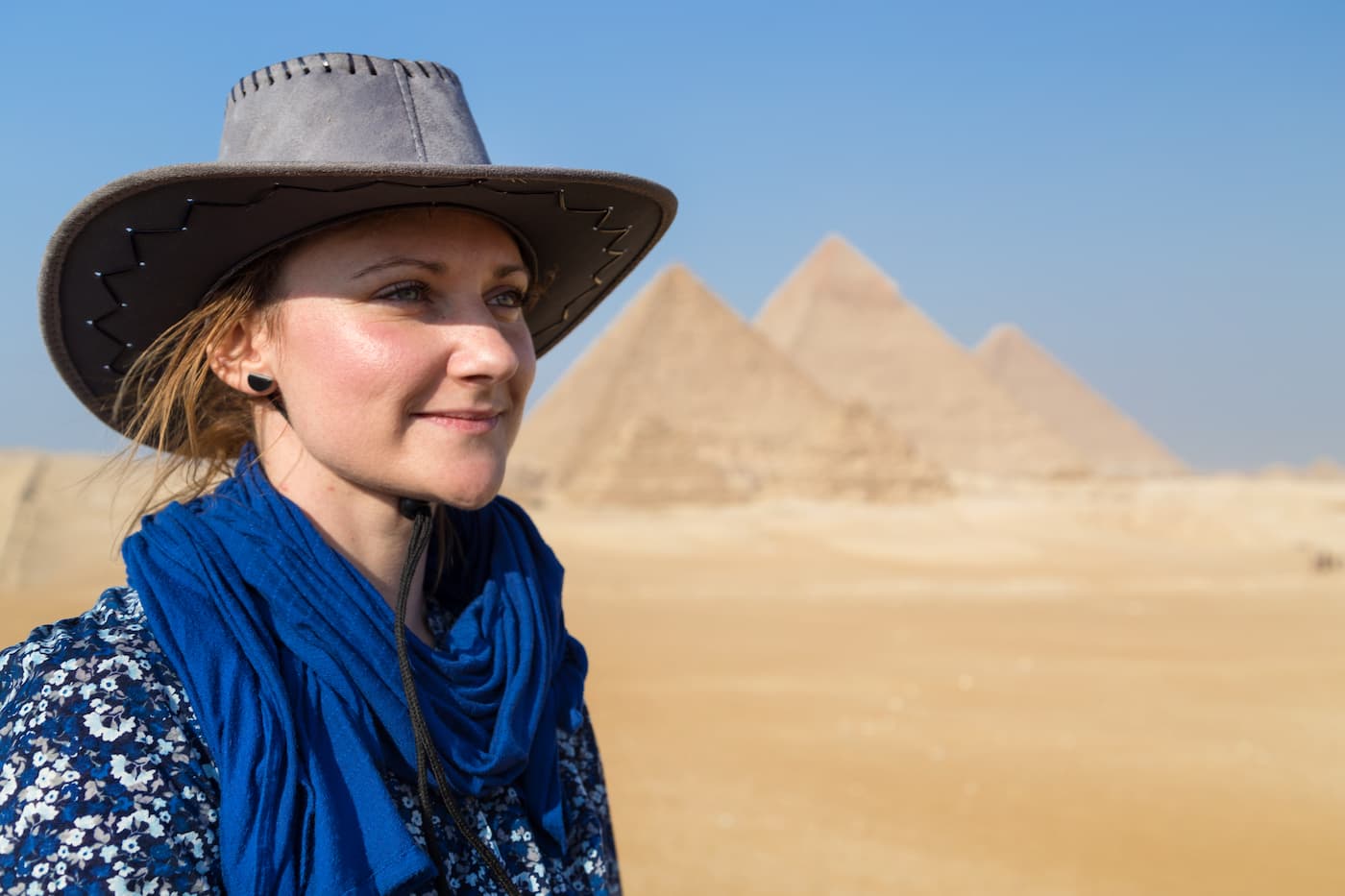Egyptian God Set: Ancient Egyptian God of Chaos, Deserts, Violence& Storms
Set is a god of deserts, storms, disorder, violence, and foreigners in ancient Egyptian religion. In Ancient Greek, the god’s name is Sēth (Σήθ). Set had a positive role because he accompanied Ra on his barque to repel Apep (Apophis), the serpent of Chaos. Set had a vital role as a reconciled combatant. He was lord of the Red Land (desert), where he was the balance to Horus‘ role as lord of the Black Land (fertile land).
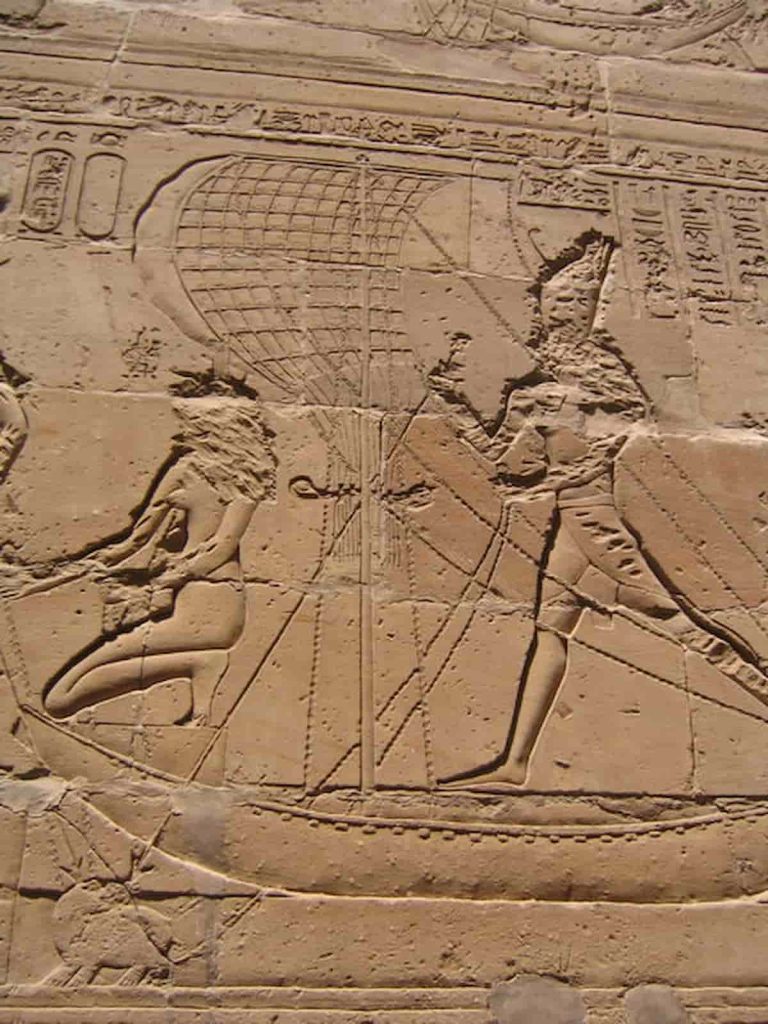
Set defeated by Horus
In the Osiris myth, the most important Egyptian myth, Set had an image as the usurper. He murdered and mutilated his own brother, Osiris. Osiris’s sister-wife, Isis, reassembled his corpse and resurrected her dead brother-husband with the help of the goddess Nephthys. The resurrection lasted long enough to conceive his son and heir, Horus. Horus tried to take revenge upon Set. Then, many of the ancient Egyptian myths describe their conflicts.
What does his Name mean?
The meaning of the name Set is unknown, but it is thought to have been originally pronounced sūtiẖ based on spellings of his name in Egyptian hieroglyphs as stẖ and swtẖ. The Late Egyptian spelling stš reflects the palatalization of ẖ, while the eventual loss of the final consonant is recorded in spellings like swtj. The Coptic form of the name, Sēt, is the basis for the English vocalization.
The Family of Set
Egyptian god Set is the son of Geb, the Earth, and Nut, the Sky. His siblings are Osiris, Isis, and Nephthys. He married Nephthys. Although everyone thought that they were the parents of Anubis, some Egyptologists, such as Herman te Velde, have doubted whether Set was ever regarded as Anubis’s father in ancient Egyptian religion (Osiris being the father of this god instead). Seth also had relationships with the foreign goddesses Anat and Astarte in some accounts. From these relationships is said to be born a crocodile deity called Maga.
The Set Animal
In art, Set is usually an enigmatic creature referred to by Egyptologists as the Set animal, a beast not identified with any known animal, although it could be seen as resembling a Saluki, an aardvark, an African wild dog, a donkey, a hyena, a jackal, a pig, an antelope, a giraffe, or a fennec fox. The animal has a downward curving snout; long ears with squared-off ends; a thin, forked tail with sprouted fur tufts in an inverted arrow shape; and a slender canine body.
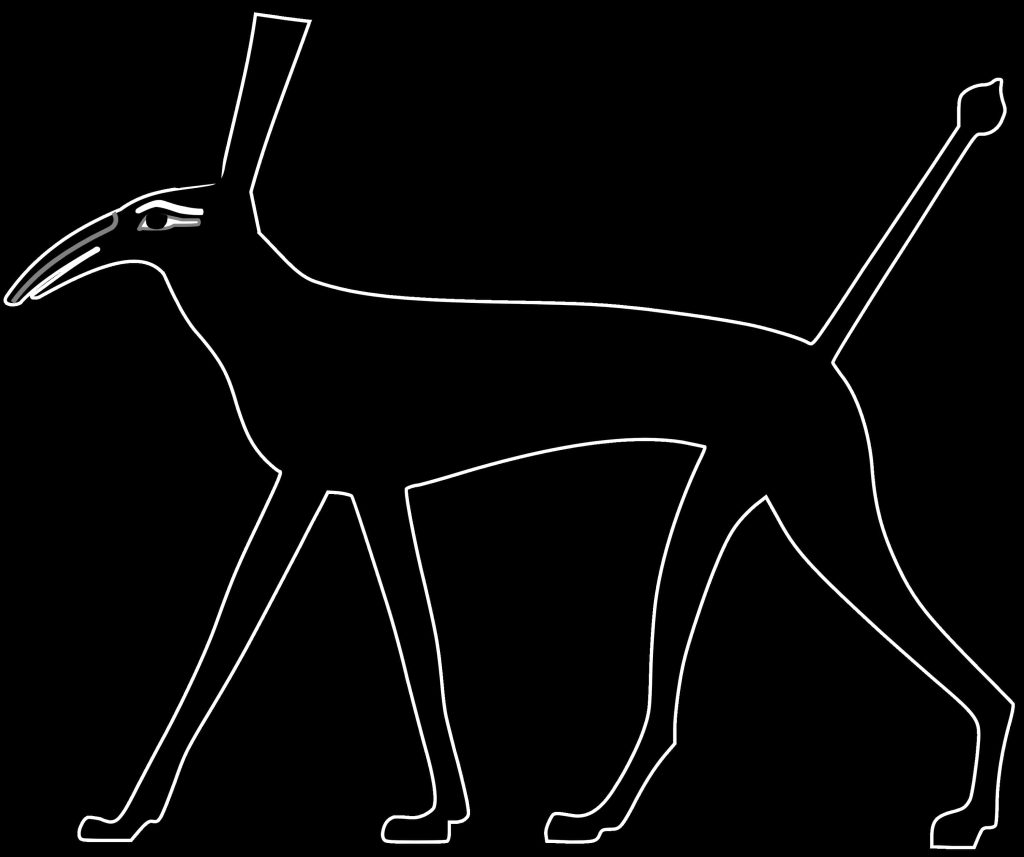
Set_animal
Sometimes, Set was depicted as a human with a distinctive head. Some early Egyptologists proposed that it was a stylised representation of the giraffe, owing to the large flat-topped “horns” which correspond to a giraffe’s ossicones. The Egyptians themselves, however, used distinct depictions for the giraffe and the Set animal. During the Late Period, Set is usually depicted as a donkey or as a man with the head of a donkey. In the Book of the Faiyum, Set is depicted with a flamingo head.
The earliest representations of what might be the Set animal come from a tomb of the Amratian culture (“Naqada I”) of prehistoric Egypt (3790–3500 BCE), although this identification is uncertain. If these are ruled out, then the earliest Set animal appears on a ceremonial macehead of Scorpion II, a ruler of the Naqada III phase. The head and the forked tail of the Set animal are clearly present on the mace.
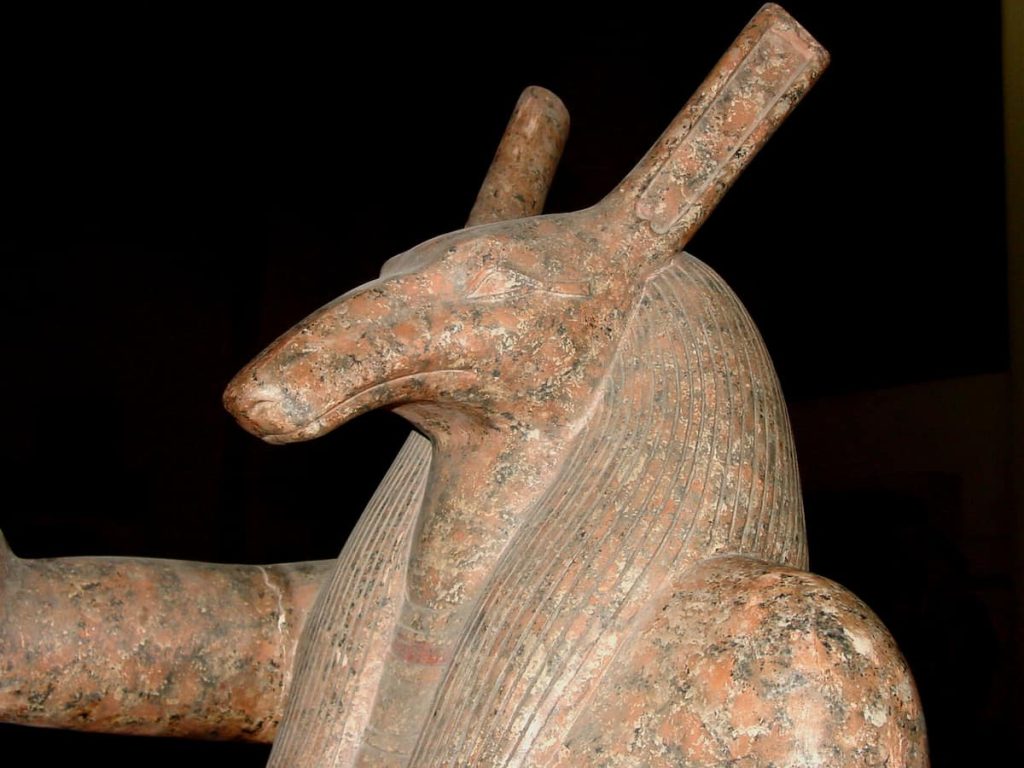
Seth animal
The Conflict with Horus
An important element of Set’s mythology was his conflict with his brother or nephew, Horus, for the throne of Egypt. The contest between them is often violent but is also described as a legal judgment before the Ennead, an assembled group of Egyptian deities. That was to decide who should inherit the kingship. A judge might be Geb, as the father of Osiris and Set; he once sat on the throne before they did. Or it might be the creator gods, Ra or Atum, who are the originators of kingship. Other gods are at play: Thoth often acts as a mediator in disputes or an assistant in the divine adjudication. Moreover, in the Contendings, Isis employs her artful and magical powers to assist her son.
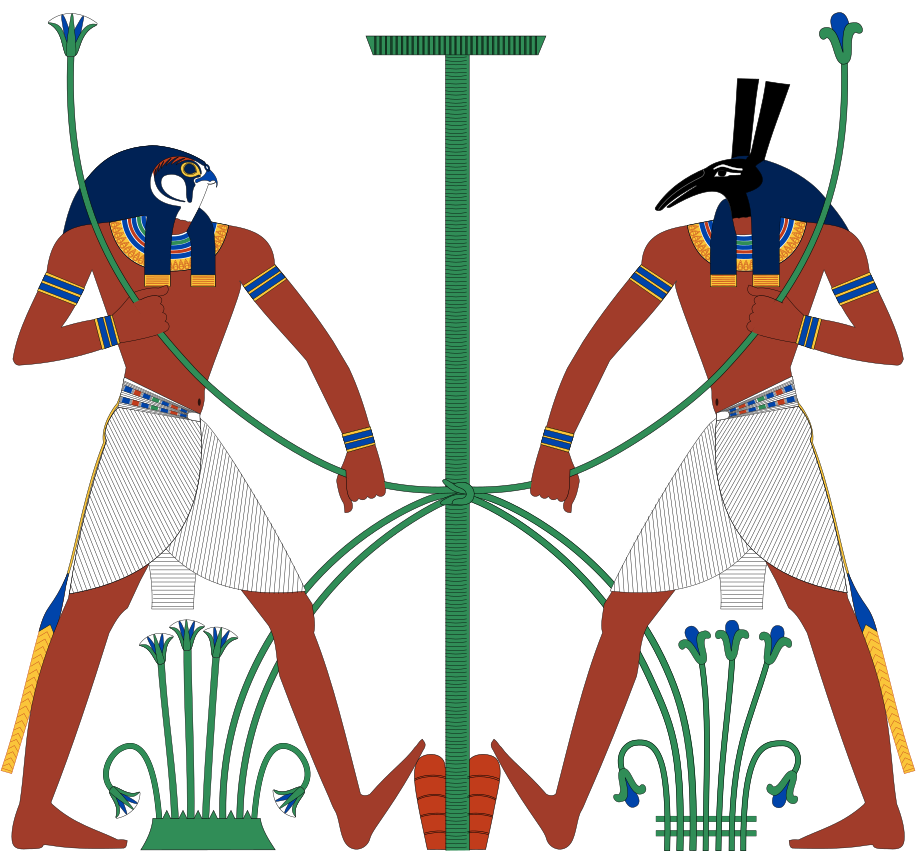
Horus and Set
Horus repeatedly defeats Set, and most of the other deities supported him. However, the dispute continues for eighty years, largely because the judge, the creator god, favors Set. The strife in the divine realm extends beyond the two combatants. At one point, Isis attempts to harpoon Set as he looks in combat with her son. But she strikes Horus instead, who then cuts off her head in a fit of rage. Thoth replaces Isis’s head with the head of a cow. The story gives a mythical origin for the cow-horn headdress that Isis commonly wears.
Set in Myths
In a key episode in the conflict, Set sexually abuses Horus. Set’s violation is partly meant to degrade his rival, but it also involves homosexual desire, in keeping with one of Set’s major characteristics, his forceful, potent, and indiscriminate sexuality. In the earliest account of this episode, in a fragmentary Middle Kingdom papyrus, the sexual encounter begins when Set asks to have sex with Horus. Horus agrees on the condition that Set will give Horus some of his strength.
There were concerns about the mutilations that the combatants inflict upon each other: Horus injures or steals Set’s testicles. Set damages or tears out one, or occasionally both, of Horus’s eyes. Sometimes the eye is torn into pieces. Set’s mutilation signifies a loss of virility and strength. The removal of Horus’s eye is even more important, for this stolen eye of Horus represents a wide variety of concepts in Egyptian religion.

Set defeated by Horus
One of Horus’s major roles is as a sky deity. For this reason, his right eye was said to be the sun and his left eye the moon. The theft or destruction of the eye of Horus is therefore equated with the darkening of the moon in the course of its cycle of phases, or during eclipses. Horus may take back his lost Eye, or other deities. Deities such as Isis, Thoth, and Hathor may retrieve or heal it for him.
Why was Set jealous of Osiris?
In Egyptian mythology, Set was jealous of Osiris because Osiris was the ruler of Egypt, that was a position Set coveted for himself. Additionally, some versions of the myth suggest that Set was also envious of Osiris’s popularity and the respect he commanded from both humans and the gods. Further fueling Set’s resentment was the fact that his wife, Nephthys, disguised herself as Isis and seduced Osiris, leading to the birth of Anubis.
Was Set the Protector of Ra?
Set was depicted standing on the prow of Ra‘s barge defeating the dark serpent Apep. In some Late Period representations, such as the Persian Period Temple of Hibis at Kharga, Set was depicted in this role with a falcon’s head. He also assumed the guise of Horus. In the Amduat, Set was as having a key role in overcoming Apep.
Set in the Second Intermediate(Ramesside) and later periods
- During the Second Intermediate Period (1650–1550 BCE), a group of Near Eastern peoples, known as the Hyksos (literally, “rulers of foreign lands”) This group controlled Lower Egypt and ruled the Nile Delta from Avaris.They chose Egyptian god Set, originally Upper Egypt’s chief god, the god of foreigners, and the god they found most similar to their own chief god, Hadad, as their patron
- Set then became worshiped as the chief god once again. The Hyksos King Apophis worshiped Set. King Apophis chose Seth as his lord. He did not worship any other deity in the whole land except Seth.
- When Ahmose I overthrew the Hyksos and expelled them, in c. 1522 BCE, Egyptians’ attitudes towards Asiatic foreigners became xenophobic, and royal propaganda discredited the period of Hyksos rule. The Set cult at Avaris flourished, nevertheless, and the Egyptian garrison of Ahmose there became part of the priesthood of Set.
- In ancient Egyptian astronomy, Set was commonly associated with the planet Mercury.
- The Set also became associated with foreign gods during the New Kingdom, particularly in the delta. The Egyptians identified Set with the Hittite deity Teshub, who, like Set, was a storm god, and the Canaanite deity Baal, being worshipped together as “Seth-Baal”.
- Moreover, Set was in part of the Greek Magical Papyri. They were a body of texts forming a grimoire used in Greco-Roman magic during the fourth century CE.
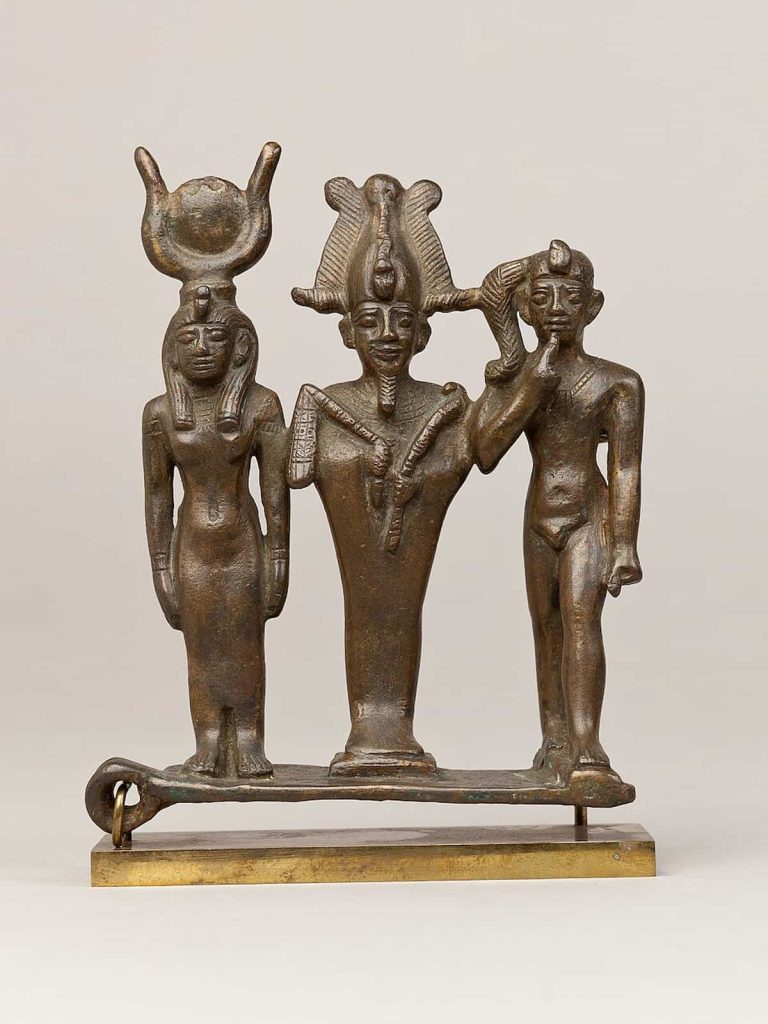
Set, Osiris, and Horus
The demonization of Set
After Egypt’s conquest, Set was particularly vilified, and his defeat by Horus was widely celebrated. The set’s negative aspects were clear during this period. Set was the killer of Osiris. As he had hacked Osiris’ body into pieces and dispersed it so that he could not be resurrected.
Set and Typhon also had in common that both were sons of deities. They represent the Earth (Gaia and Geb), who attacked the principal deities (Osiris for Set, Zeus for Typhon). Nevertheless, throughout this period, in some outlying regions of Egypt, Set was still the heroic chief deity.
Set temples
Ancient worshipped Set at the temples of Ombos (Nubt near Naqada) and Ombos (Nubt near Kom Ombo). They were at Oxyrhynchus in Middle Egypt, and also in part of the Fayyum area. More specifically, all worshipped Set in the relatively large metropolitan (yet provincial) locale of Sepermeru, especially during the Ramesside Period. There, Set was honored with an important temple called the “House of Set, Lord of Sepermeru”. One of the names of this town was “gateway to the desert”. It fits well with Set’s role as a deity of the frontier regions of ancient Egypt.
Set’s cult persisted even into the latter days of ancient Egyptian religion, in outlying but important places like Kharga, Dakhlah, Deir el-Hagar, Mut, and Kellis. In these places, Set was “Lord of the Oasis / Town”. Nephthys was likewise venerated as “Mistress of the Oasis” at Set’s side, in his te
mples, especially the dedication of a Nephthys-cult statue. Meanwhile, Nephthys was also venerated as “Mistress” in the Osirian temples of these districts as part of the specifically Osirian college. It would appear that the ancient Egyptians in these locales had little problem with the paradoxical dualities inherent in venerating Set and Nephthys, as juxtaposed against Osiris, Isis, and Nephthys. During the Ptolemaic Period, a temple to both Horus and Sobek (who was often with Set as both took the form of a crocodile) existed south of Nubt. Its name was Ombos (now Kom Ombos) after the god of the ancient city (Set).
Conclusion
The set was to be very strong, but dangerous, and strange. Even as an infant, Set was unpredictable and destructive. According to the Pyramid Texts, he ripped himself violently from his mother’s womb instead of being born normally like his siblings.
A Friend of the Dead
However, he was not always an evil being. Set was a friend of the dead. He helped them ascend to heaven on his ladder and protected the life-giving oases of the desert. At times, he was a powerful figure to the pharaoh and even the sun god Ra.

